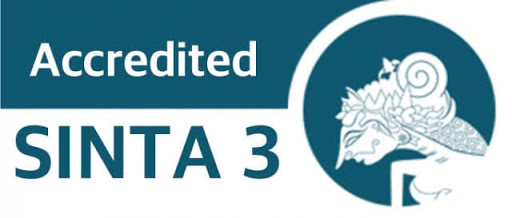IMPLEMENTING CONTEXT-BASED AND CREATIVITY-BASED MATERIALS TO IMPROVE SCIENCE LITERACY OF ELEMENTARY SCHOOL STUDENTS
Abstract
This study aimed to describe the implementation of context-based and creativity-based materials at grade V SD Negeri Pangkalan in order to support the development of materials to increase students’ learning outcome. This research was development research consisting of ten steps. The needs analysis was conducted based on teachers’ and students’ perceptions carried out on 21 students at the 5th grade as the experimental class and 20 students in the control class. The data were collected through a questionnaire and a test of students’ learning outcomes. The needs analysis consisted of four aspects: content, linguistics, presentation, and graphic. This study revealed that 80.9% students who were taught through Context-based and Creativity-based materials achieved the learning completeness. Meanwhile, in the control class, only 60% student achieved the learning completeness. Thus, Context-based and Creativity-based materials were effective to improve the students’ scientific literacy.
Keywords
Full Text:
PDF (BAHASA INDONESIA)References
Abdul, G. (1994). Disain instruksional: langkah sistematis penyususnan pola dasar kegiatan belajar mengajar. Solo: Tiga Serangkai.
Barker, V., & Millar, R. (1999). Students reasoning about basic chemical reactions: What changes occur during a context-based post-16 chemistry course? International Journal Science Education, 21(6), 645-665.
Bennett, J., & Lubben, F. & Hogarth, S. (2006). Bringing science to life: A synthesis of the research evidence on the effects of context-based and sts approaches to science teaching. Science Education, 91(3), 347-370
Conny R. & Semiawan. (2009). Kreativitas dan Keberbakatan Jakarta : PT. Indeks.
Departemen Pendidikan Nasional. (2008). Panduan Pengembangan Materi Pembelajaran. Jakarta: Direktorat Jendral Manjemen Pendidikan dasar dan Menengah
Firman, H. (2007). Laporan Analisis Literasi Sains Siswa Indonesia Berdasarkan Hasil PISA Nasional Tahun 2006. Jakarta : Pusat Penilaian Pendidikan Balitbang Depdiknas
Ramsden, P. (1997). The Context of Learning in Academic Departments. The Experience of Learning, 2, 198-216.
Köse, E., & Tosun, F. (2011). Effect of context based learning in students achievement about nervous system. Journal of Turkish Science Education, 8(2), 91-106.
Sukmadinata, & Syaodih, N. (2006). Metode Penelitian Pendidikan. Bandung: PT Remaja Rosdakarya,cet kedua.
Arikunto, S. (2013). Prosedur Penelitian: Suatu Pendekatan Praktik. Jakarta: Rineka Cipta.
Arikunto, S. (2010). Prosedur Penelitian Suatu Pendekatan Praktik. Jakarta: Rineka Cipta.
DOI: http://dx.doi.org/10.33578/pjr.v5i1.8096
Refbacks
- There are currently no refbacks.
Copyright (c) 2021 JURNAL PAJAR (Pendidikan dan Pengajaran)

This work is licensed under a Creative Commons Attribution-NonCommercial-ShareAlike 4.0 International License.
JURNAL PAJAR (Pendidikan dan Pengajaran)
Secretariat
Program Studi Pendidikan Guru Sekolah Dasar
Gedung B1, FKIP Universitas Riau
Kampus Bina Widya Km. 12,5 Simpang Baru Panam
Pekanbaru Riau Indonesia 28293
e-mail : pajar@ejournal.unri.ac.id



